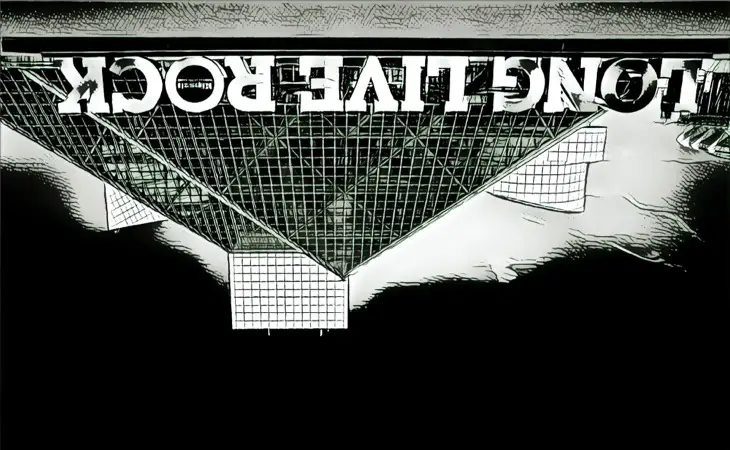Uncovering the Next Generation's Hall of Fame

Women, Rock & Roll, and the Hall of Fame

[Janet] Jackson is one of only two women being inducted into the hall this year, out of 37 inductees, including the members of the five all-male bands being inducted. The other woman is Stevie Nicks. During the 34 years since the hall was founded by Jann Wenner and Ahmet Ertegun, 888 people have been inducted; 69 have been women. That’s 7.7 percent. The problem is spreading.
...
The Rock Hall is the most obvious offender in what I’ll call the manhandling of musical history. Manhandling is akin to, and often — as with the Rock Hall — intersects with, whitewashing. Manhandling pushes women out of the frame just as whitewashing covers up black bodies. People of color account for 32 percent of Rock Hall inductees, a far better figure than for women, but still not representative of the enormous role African Americans and Latinx people have played in American popular music.
McDonnell makes the case that the gender disparity was baked in from the first induction class and takes aim at one of the Rock Hall’s founding members:
[Buddy] Holly and [Chuck] Berry were both among the first 16 acts inducted in the Rock Hall, in 1986. All their fellow inductees were male. Built on such grotesquely imbalanced footing, the institution may never get itself right. After all, its main instigator was Ahmet Ertegun, an admittedly legendary records man who treated women abominably, according to Dorothy Carvello’s 2018 memoir Anything for a Hit. Carvello is a music executive who began her career working for Ertegun at Atlantic. Ertegun subjected her to crude sexual harassment and once fractured her arm in anger. The Rock Hall named its main exhibition hall after Ertegun. How can this ever be a place where women feel welcome, let alone safe? Just as universities have removed from buildings and fellowships the names of film executives who gave them money, such as USC renaming their Bryan Singer Division of Critical Studies, the Rock Hall should remove Ertegun’s name from the building and from the annual industry executive award that bears his name. It’s an award that has never been given to a woman.
...
Guys like Ertegun, who died in 2006, reportedly manhandled in the workplace, in addition to creating the Cleveland shrine to gender inequity. Carvello’s book documents in scandalous detail how he and other executives created a boys’ club environment where women had to either pretend to be one of the boys, betraying their sisters, or trade sex for promotion. In Ertegun’s world, women were not allowed to step up; they were stepped on. Having systematically excluded and oppressed women from the business of making music, Ertegun and his cronies at the Rock Hall then carved that exclusion into stone by essentially writing them out of history, year after year after year. When women do get let into the Rock Hall boys’ club, it is on the arms of men: Carole King is there for her songwriting with Gerry Goffin, not as the woman who recorded numerous hit songs herself, including those on the record-smashing album Tapestry. Tina Turner was inducted alongside her abusive ex-spouse Ike.
McDonnell also points out that the induction system created by the Rock Hall perpetuates the gender imbalance every year because each inductee becomes a voter, who then “vote in their friends and heroes, who tend to be men.”
Those of us who criticize the Rock & Roll Hall of Fame do so because despite its flaws, the institution does matter. McDonnell feels the same way:
It’s tempting to just say so what. I would like to not care about what institutions such as the Met and Hall of Fame do. They are essentially shrines to white men created by white men, so of course, they honor white men. But they pretend to serve the public — and in the Met’s case, it is in part a publicly funded institution. The Hall of Fame and its associated museum have enormous cultural power, writing in stone the historical importance of individuals in a way that no other institution or publication or organization does. They also create real economic benefits for culture workers. Being inducted into the Rock Hall doesn’t just look good on your resume, it helps sell records and tickets. Most importantly, these institutions provide inspiration — role models — for future generations. And if the only women you’re going to see receiving awards on that stage at the Barclays Center are Janet Jackson and Stevie Nicks, would you, if you were a little girl, go pick up a guitar?
It should be noted here that the Rock & Roll Hall of Fame Museum is also supported by taxpayers to the tune of over $125 million since 1995.
McDonnell offers a course of action for the Rock Hall:
There are three things the Hall of Fame can do to rectify that imbalance: 1. Flood the nominating committee and voting membership with more women. Six out of 29 members of last year’s nominating committee were women; the notoriously tight-lipped hall has not revealed this year’s committee members. 2. Reduce the voting power of members inducted as players in bands (so, say, the five dudes in Def Leppard each get one fifth of a vote). 3. Nominate a shit ton of all-female bands next year.
Evelyn McDonnell also edited last year’s Women Who Rock anthology.
